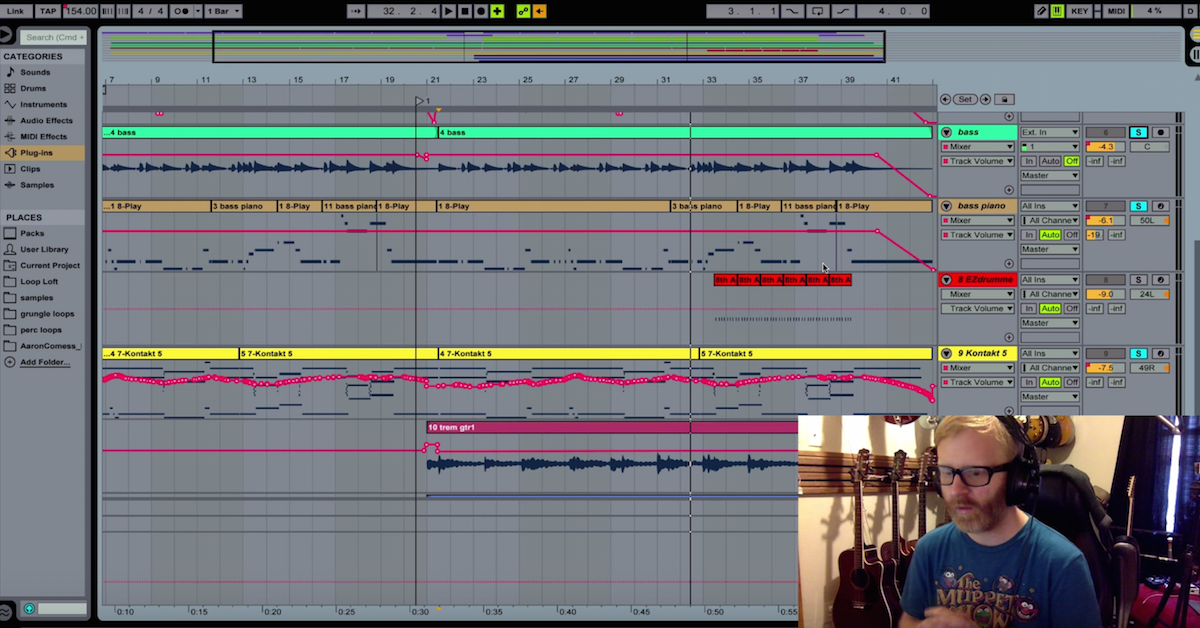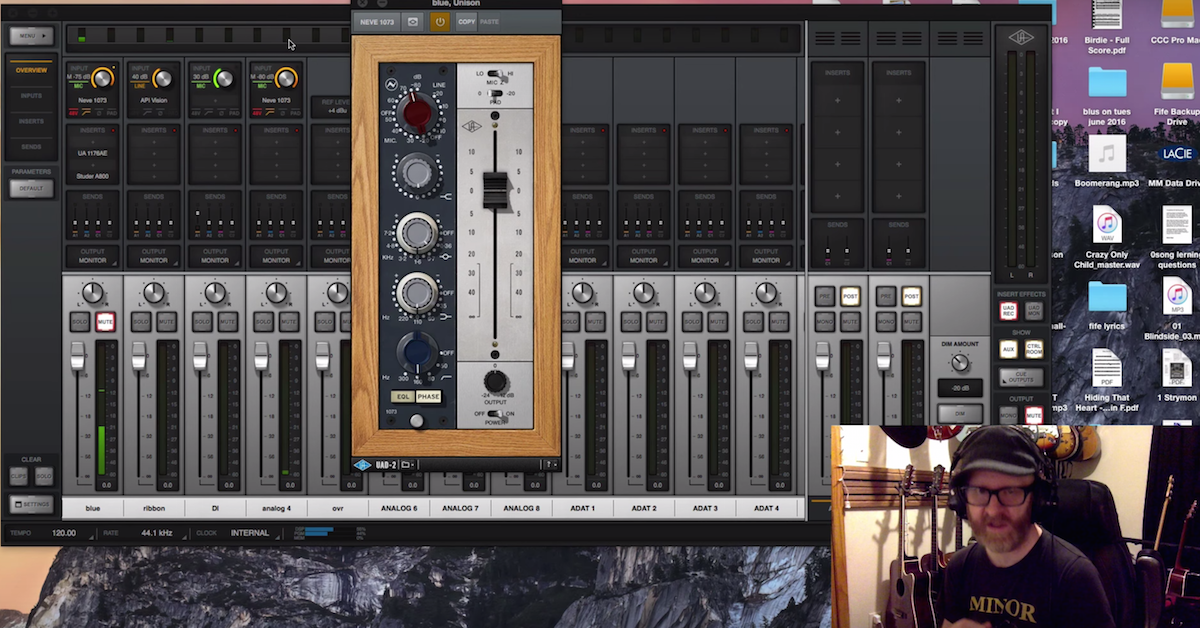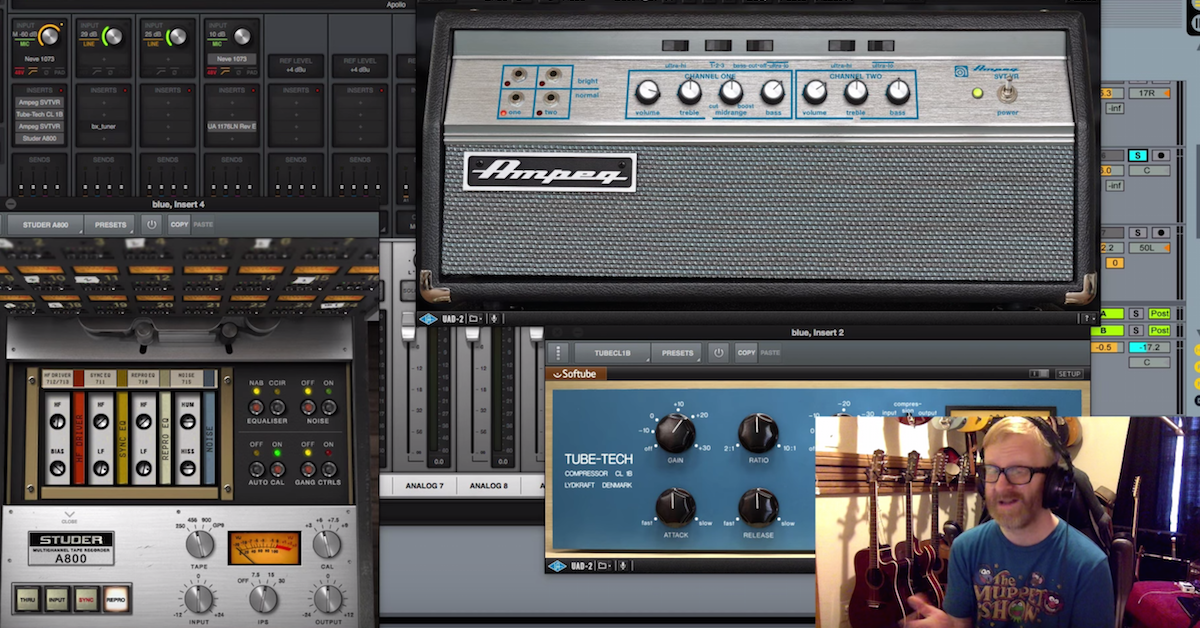5 Music Production Secrets of The Beatles
Article Content
Widely regarded as one of the greatest and most influential bands in the history of popular music, there is plenty of available literature on the techniques and equipment used to record The Fab Four, including my personal favorite Recording The Beatles by Brian Kehew and Kevin Ryan.
Here are some examples of creative production techniques used by the group and the talented crew of engineers that helped create a catalog of albums that have sold well over two billion copies:
1. Recording at Half-Speed on “In My Life”
On this song from 1965 Album Rubber Soul, all but the instrumental bridge section had been completed. John Lennon asked Producer George Martin to come up with “something baroque sounding.”¹
Martin’s Bach-inspired Piano solo was written at a tempo that Martin himself couldn’t play. The engineers brilliantly recorded the part with the tape running at half-speed, so when it was played back at normal speed, the solo was an octave higher and twice as fast. Additionally, the timbre was altered, with the attack of the notes played on the piano becoming more prominent.
There are numerous other examples of the engineers using this technique on Beatles recordings, including extensive use on “Strawberry Fields Forever.”
Using the “varispeed” mode in Pro Tools’ elastic audio can perhaps yield similar results.
2. Reverse Tape Effect on the Guitar Solo of “I’m Only Sleeping”
On this John Lennon tune from Revolver (1966) George Harrison spent a reported five hours meticulously constructing a guitar part by having the engineers run the tape backwards as he composed a solo that would ultimately, when reversed, “fit the dreamlike mood.”²
The part was double-tracked, once with fuzz, and once without. Conveniently, you can hear the entire master reversed, revealing what the original guitar recording sounds like at Beatles Bible.
Essentially every modern DAW has a reverse audio capability, but actually taking the time to write out the performance before the effect is applied will definitely result in something unique.
3. Randomly Splicing Tape Loops Together on “Being for the Benefit of Mr. Kite!”
For this song, which derived virtually all of its lyrical content from a 19th century circus poster owned by John Lennon, a “carnival atmosphere” was desired for the production.
In the middle-eight, we have perhaps one of the most creative techniques used on The Beatles recordings, with engineer Geoff Emerick (as instructed by George Martin) taking tape recordings of fairground organs and calliope music, chopping the tape with scissors, throwing the pieces up into the air, and reassembling at random.⁴
The resulting effect is quite unique, and fits in perfectly with the rest of the psychedelic Sgt. Pepper’s Lonely Hearts Club Band.
This type of effect (if desired) is not only much easier to do in a modern DAW, it is certainly cheaper than mangling sought-after analog tape.
4. Use of Tea Towels and Other Drum Muffling Techniques on Multiple Recordings
As early as 1962, Ringo can be seen using John’s Harmonica to dampen his snare drum.
Throughout the years, it was quite common to use tea towels to muffle the sound of his drums. A collection of pictures and information on Ringo’s kits and evolution can be seen at Ringo’s Beatle Kits. This became a sonic staple for the band.
Using tea towels or other muffling devices can allow for more control over the volume, attack and decay of individual drums. Especially considering it was common for the engineers to apply extreme compression on Ringo’s kit with a Fairchild limiter, dampening the drums allowed for a tighter, more focused sound.
I highly suggest having Moongel dampening on hand, but don’t be afraid to use something more aggressive. Native Instruments’ Abbey Road 60’s Drums even come with tea towel articulations, making it one of my go-to virtual instruments for vintage sounding drums.
Bonus: Practicing Singing on “Oh! Darling”
Performing a song until the performance sounds the way the artist wants it to — what a concept!
During the Abbey Road sessions Paul McCartney would come in early to the studio that this classic album shares a name with, arriving before the other band members, singing this retro-sounding song once per day attempting to capture the raw, strained quality that the production needed. Engineer Alan Parsons recalls:
“Paul came in several days running to do the lead vocal on Oh! Darling. He’d come in, sing it and say, ‘No, that’s not it, I’ll try it again tomorrow.’ He only tried it once per day, I suppose he wanted to capture a certain rawness which could only be done once before the voice changed. I remember him saying, ‘Five years ago I could have done this in a flash,’ referring, I suppose, to the days of Long Tall Sally and Kansas City.”⁴
There is not yet a plugin that can achieve this effect. This is just one of the countless examples of McCartney’s complete (and sometimes obsessive) dedication to capturing a musical moment exactly as he envisioned it.
Conclusion
I’ve always quite enjoyed researching the production secrets of my absolute favorite band. Fortunately, there’s a wealth of knowledge available on recordings, in books, and on various Internet sources.
Additionally, much credit to Waves, Softube, and Native Instruments whose lines of Abbey Road-inspired plugins and VSTs help preserve the sounds of this crucial time in recorded music for current engineers.






